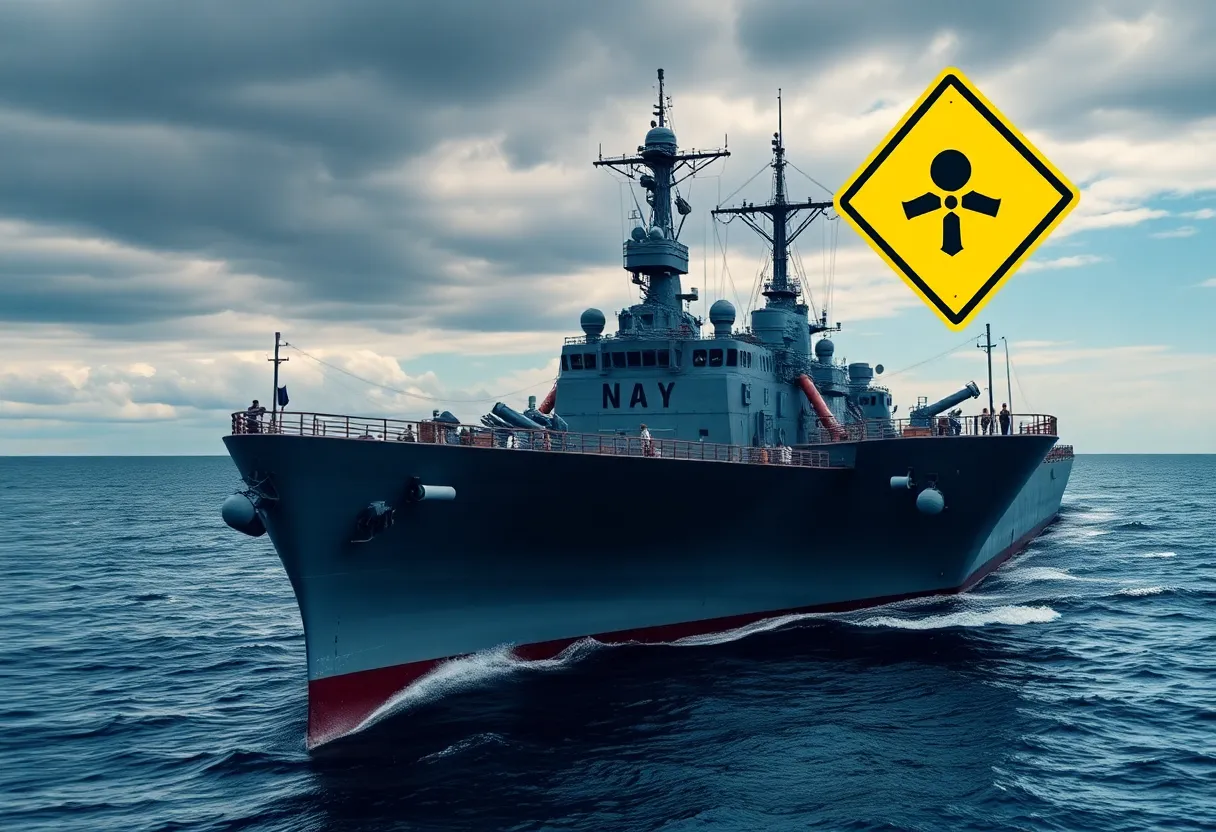News Summary
The USS McKean II, a Gearing-class destroyer, served valiantly over three decades, yet it poses significant health risks due to extensive asbestos exposure. Many veterans face life-threatening conditions such as mesothelioma, stemming from their service. This article details the hidden risks associated with asbestos in naval vessels and discusses the paths for veterans to pursue compensation and recover health. Awareness of these dangers is critical for effective health monitoring and timely intervention.
The Hidden Dangers of the USS McKean II: Asbestos and Mesothelioma Threats Uncovered
Serving with unwavering honor over three decades, the USS McKean II (DD-784) has a storied history as a Gearing-class destroyer in the United States Navy. From post-World War II Japan to the tumultuous battlegrounds of the Korean and Vietnam Wars, this vessel was a pivotal asset in military operations. However, buried beneath its legacy of valor lies a less celebrated, yet profoundly dangerous reality: the vessel’s extensive use of asbestos.
Asbestos Contamination: The Silent Threat
Constructed between the 1930s and 1980s, the USS McKean II, like numerous naval vessels of its era, was built with significant amounts of asbestos. This toxic material was prevalent throughout its structure, in everything from engine compartments to crew quarters. As a result, former crew members have been tragically compelled to contend with life-threatening illnesses such as mesothelioma, often decades after their honorable service.
The USS McKean II, displacing 2,425 tons and measuring 390 feet in length, underwent multiple conversions during its operational lifetime, including its transformation into a radar picket destroyer in 1952 and further modernization in 1964. Each upgrade not only enhanced its military capabilities but, alarmingly, disturbed asbestos materials, releasing cancer-causing fibers into the air and creating critical exposure risks for both crew members and shipyard workers.
The Extent of Asbestos Exposure
Asbestos was not only present in typically recognized areas like engines and heating systems but also infiltrated nearly every corner of the ship. Kitchen supplies, firefighting equipment, floor tiles, and insulation were made with or contained this hazardous material. Even though the presence of asbestos was prevalent, it was often overlooked or ignored—a decision that may haunt many veterans and their families today.
The scandalous truth is that many who served aboard the USS McKean II are only now experiencing the devastating effects of asbestos exposure. Mesothelioma often takes 20 to 50 years to manifest, prolonging the agony of diagnosis and treatment.
The Path to Recovery and Compensation
For U.S. Navy veterans diagnosed with mesothelioma or other asbestos-related diseases, there are clear pathways to pursue compensation. The first option is through the Department of Veterans Affairs, which acknowledges the link between military service and asbestos exposure. Successful claims require substantiating the connection between service history and current health issues through medical and service records.
Additionally, veterans may consider legal action against manufacturers of asbestos products. This includes filing civil suits, which can yield substantial compensation, especially since many asbestos manufacturers have established trust funds for victims as part of bankruptcy proceedings. It’s critical to remember that pursuing legal recourse does not jeopardize eligibility for VA benefits—veterans can simultaneously explore multiple compensation avenues.
Stay Vigilant, Stay Informed
For those who served onboard the USS McKean II, it’s vital to remain vigilant about health concerns stemming from past asbestos exposure. Informing healthcare providers about any service history related to asbestos is crucial for timely monitoring and diagnosis. Early intervention can dramatically influence treatment outcomes and overall prognosis.
As the world increasingly recognizes the dangers of asbestos, specifically in military contexts, the plight of USS McKean II veterans exemplifies a larger narrative. The memory of the ship, filled with tales of bravery and valor, now stands as a dual testament to both service and the hidden, yet life-altering, ramifications of asbestos exposure.
As we commemorate the sacrifices made by these naval heroes, it’s imperative to shed light on the ongoing health challenges many continue to face in silence. Awareness and continued advocacy for proper treatment options, as well as compensation for those affected, remain paramount.



















